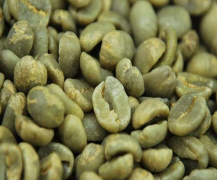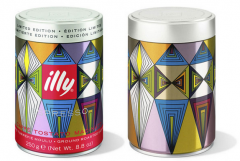The brewing method of fine coffee the preparation of iced coffee
From sunrise to sunset, the central coast of Northern California, home to the major tourist attractions of Big Sur, Monterey and Santa Cruz, thickens with tourists. Mist blowing in from the Pacific Ocean lends a lot of charm to this area. It is fertile ground for wine production, but also home to charming mangroves and stunning scenery films.

In the cold and wet winter, warm clothing has become a necessity for people. And in summer, people enjoy plenty of sunshine. As the morning fog dissipates, the seaside town becomes a paradise on earth. For Santa Cruz, summer life can be seen as the economic and spiritual backbone of the town.
Verve Coffee Roaster, a Santa Cruz beachfront coffee roaster, sees the town's climate as one where winter and foggy mornings don't worry about sales, and warmer weather means it's time to get creative. The company was once positioned as a local and coffee-centric operation, but Verve found that its iced coffee brewed in three different locations was highly oxidized, greatly affecting its flavor and freshness. Verve Product Development Manager Jess Crouse understands the need to give the summer menu a facelift.
"We found that coffee had an aging flavor after 24 hours of steeping," Jesse said."This was not satisfactory to us. We did not want to use this typical, standardized way of making iced coffee anymore and turned a blind eye to its shortcomings."
In order to find the "atypical" way, Jesse and partner Ryan O'Donovan experimented together and eventually developed a patented method for producing iced coffee. In addition, they barrel coffee to ensure quality stability for later distribution. And, once the iced coffee reaches the barista, they inject it with nitrogen, just like Guinness beer.
Dark and thick, Verve's answer to iced summer drinks is unmatched by competitors serving regular iced coffee. This ingenious creation has impacted not only the Santa Cruz coffee industry, but the coffee industry as a whole. A recent Instagram photo of their Streetman espresso received over 800 likes and countless comments in one day. A picture of a freshly infused tulip cup of coffee, still filled with nitrogen, elicits a flood of drool from across the country. In addition, this new iced coffee is "weather harmless." "This drink has a similar texture to the usual spirits that sell well in winter," says Brit McCorquodale, Verve's marketing director. "Its weight makes it suitable for winter drinking, and its lightness makes it a good product for warm climates."
Verve isn't the first company to develop icebrews and make their own. There is something in iced coffee that appeals to people and causes baristas and roasters to explore it, hoping to develop their own style of drink. And their efforts have paid off handsomely, from increased sales and recognition of artisanal coffee to better summer drinks.
Cold brew, often called toddy, refers to coffee that takes more than half a day to extract with cold water. It's not a recent addition to the specialty coffee market, but it's accelerating to displace traditional iced coffee. Ice brews are gradually becoming a regular item on the menu of the third wave of boutique coffee shops. At the same time, coffee retailers and roasters are struggling to meet high demand by developing ways to enhance iced brew flavor and increase the appeal of the third wave.
There are many reasons for the popularity of ice cream, but for most consumers, it's the taste they value. Icebrew stems from the idea that hot coffee should not be poured on ice (except for Japanese iced coffee making methods) and that hot water should not be used to extract and then cool it. The reason is that this method of preparation does not allow the flavor to be fully expressed. After losing steam and aroma, add ice cubes, and good coffee quickly turns to water and loses its charm.
In contrast, slow and patient extraction gives ice brews excellent flavor and body. Sweeter, smoother and less acidic than hot coffee extract. It tends to extract less caffeine, so you can drink more. Many of today's craft iced coffees are made from specially roasted single-serve beans that produce flavor complexity comparable to that of the best extracted Chemex or espresso. This will add to the uniqueness of the coffee shop menu, which itself will soon become a coffee subcategory.
"Chocolate flavor, low bitterness, less tannins, acidity that doesn't pass directly to the taste buds, but instead brings a rounded and rich flavor…" is the description of the Chameleon Iced Coffee product in Austin, Texas. "We believe there are many reasons why coffee tastes better this way," said Chris Campbell, chairman and CEO. For his part, he prefers warm, smooth Chameleon coffee in the morning to hot, extracted coffee.
Unlike other roasters who make iced brew as a coffee side item, Chameleon focuses solely on the making of iced brew. The hot, dry climate makes cold drinks a necessity, and they only make bottled iced drinks. Their product philosophy is "take your time. Do the right thing. Many people can make hot coffee in minutes, but not in ice. So let's do it for our customers."
Important Notice :
前街咖啡 FrontStreet Coffee has moved to new addredd:
FrontStreet Coffee Address: 315,Donghua East Road,GuangZhou
Tel:020 38364473
- Prev

Coffee tasting Guide Raminita La Minita Coffee tasting
[Raminita La Minita] this is a world-famous manor with strict quality control and stable quality. We are very surprised that we can't find any defective beans when we open them. [geography of Raminita] Hacienda La Minita Manor is located in the famous Tarrazu producing area of Costa Rica, due to its excellent geographical environment.
- Next

The difference between Illy coffee beans and Lavazza coffee beans
Illy and Lavazza, the two top brands of Italian coffee beans, should be the most familiar coffee brands. Chongqing Beresta Coffee Institute here we will make a simple understanding of these two brands! First: the history of ILLY Coffee was founded in 1933 in the seaport city of Trieste in northeastern Italy. The illy Coffee Company was founded by Mr. FrancescoIlly.
Related
- Guji coffee producing area of Guji, Ethiopia: Humbela, Shakiso, Wulaga
- What is the most expensive variety of Qiloso in BOP multi-variety group?
- How to store the coffee beans bought home?
- Why are Yemeni coffee beans so rare now?
- Ethiopian Sidamo all Red Fruit Sun Sun Santa Vini Coffee beans
- SOE is mostly sour? What does it mean? Is it a single bean? what's the difference between it and Italian blending?
- Is Italian coffee beans suitable for making hand-brewed coffee?
- How to choose coffee beans when making cold coffee? What kind of coffee beans are suitable for making cold coffee?
- Just entered the pit to make coffee, what kind of coffee beans should be chosen?
- Can only Japan buy real Blue Mountain Coffee? What are authentic Jamaican Blue Mountain coffee beans?

